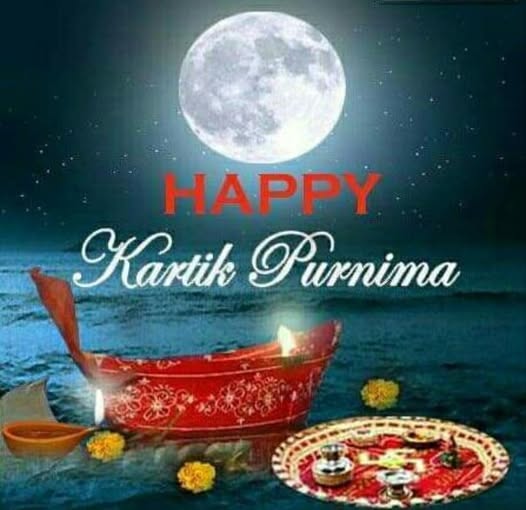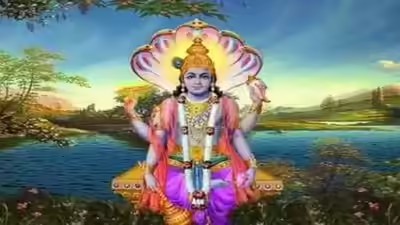Supermoon November 2025: Year’s brightest supermoon will be visible in the sky on the night of Dev Diwali, know the timing for your city
The biggest supermoon of this year has been visible today on Kartik Purnima. It is 14 percent larger and 30 percent brighter than the moon normally visible on a full moon. Let us know what a supermoon is.

November golden supermoon: The coincidence of Kartik Purnima and Dev Diwali has brought a wonderful scene this time. On the night of Wednesday, November 5, 2025, such a sight is visible in the sky, which is no less than a blessing to see. This night the moon is very close to the earth and appears bigger and brighter than usual. This is the reason why it is called supermoon. A supermoon is a celestial event when the moon is closest to the Earth in its orbit.
Supermoon kya hai
A supermoon occurs when the moon is closest to the Earth during a full moon or new moon. Due to this astronomical phenomenon, the Moon appears bigger and brighter than usual. The supermoon appears about 6 to 7 percent larger and 16 to 30 percent brighter than normal when seen from Earth. A supermoon is a celestial event when the moon is closest to the Earth in its orbit.
Full Moon November 2025
According to Delhi time, after 7:30 pm on November 5, a clear view of the Moon will be seen in the east. However, the time of moon rise on November 5 may be different in all cities, which is mentioned below.
5 November moon rise time
| City | Time |
| Delhi | 5:11 |
| Noida | 5:09 |
| Varanasi | 4:55 |
| Mumbai | 5:46 |
| Lucknow | 5:00 |
| Jaypur | 5:20 |
| Patna | 4:43 |
| Kanpur | 5:01 |
| Ludhiana | 5:12 |
| Ahmadabad | 5:41 |
| Chennai | 5:25 |
| Bhopal | 5:17 |
| Chandigarh | 5:09 |

The event coincided with the auspicious Hindu festival of Kartika Purnima, also known as Dev Diwali. Kartik Purnima 2025: Date, Timings, Rituals and Significance of Dev Diwali On November 5, 2025, the spiritual tapestry of Kartik Purnima unfolds, intertwining the worship of Lord Vishnu with the celebration of Dev Diwali and Guru Nanak Dev Ji’s birth anniversary. Devotees immerse themselves in an atmosphere of devotion, fasting, offering prayers, and cleansing their souls with holy dips in the Ganga, seeking both divine grace and a renewal of spirit.

Purnima is extremely sacred day, which falls every month on 15th day (waxing phase) of Lunar fortnight. This day holds a great religious and spiritual significance in Hinduism. On this auspicious day, devotees observe Satyanarayan Vrat, which is dedicated to Lord Vishnu. The Purnima that falls in the month of Kartik is considered most auspicious as Dev Diwali and celebrated on the same day. The day also marks the birth anniversary of Guru Nanak Dev Ji. This year, Kartik Purnima is going to being celebrated on November 5, 2025.
Kartik Purnima 2025: Date and Time
Purnima Tithi Begins – 10:36 PM on Nov 04, 2025Purnima Tithi Ends – 06:48 PM on Nov 05, 2025Shukla Purnima Moonrise on Purnima – 05:11 PM Purnima is extremely sacred day, which falls every month on 15th day (waxing phase) of Lunar fortnight. This day holds a great religious and spiritual significance in Hinduism. On this auspicious day, devotees observe Satyanarayan Vrat, which is dedicated to Lord Vishnu. The Purnima that falls in the month of Kartik is considered most auspicious as Dev Diwali and celebrated on the same day. The day also marks the birth anniversary of Guru Nanak Dev Ji. This year, Kartik Purnima is going to being celebrated on November 5, 2025.
Satyanarayan Vrat November 2025: Date, Time, Puja Rituals and Significance

Satyanarayan Puja is purely dedicated to honor the Lord Vishwakarma Puja is purely dedicated to honor the Lord Vishnu and is concerned on every Purnima. This time, it will be performed on Kartik Purnima, which is one of the biggest Purnima’s of the year.
The moon appeared larger and up to 30% brighter than a typical full moon because it was closer to Earth. It was visible on Wednesday, November 5, 2025. On Kartika Purnima, Odisha offers a simple philosophical lesson: to love is to let go in the annual choreography of float and flame, the community shapes a response to absence—ritual, song, and sweet food transforming private longing into a shared poetics of return.

Traditional small boat used during the auspicious occasion of Kartik Purnima. On Kartika Purnima, when the full moon spills itself over the Mahanadi and its sister rivers, Odisha becomes a single long, luminous sigh. The night is at once festival and elegy: lamps drift like small stars, miniature boats glide like secret letters, and the water takes the moon’s light and keeps it as memory. Here the celestial, the domestic, and the maritime fold into one another—the moon a silent witness, the river a courier, the boat a human hope set afloat.
Moon, river, boat
The ritual is elemental and precise. Moonlight picks out the ribs of a boat; the river receives it. For a people once masterful in inter-continental coastal trade, these images are historical as well as symbolic. The Sadhabas—merchant mariners of ancient Kalinga—sailed from these deltas to Java, Sumatra, and Bali. Today, village resident and city folk alike float tiny vessels of banana stem, cork, or paper, each loaded with lamps, rice, betel leaves, and prayers. The gesture is both commemoration and enactment: a remembering of voyages and an offering for safe return.
This triad—moon, river, boat—functions like a poem. The moon illuminates longing; the river carries it; the boat makes of longing a movement. The objects are modest, but the meanings are vast.
Bali Jatra is when Sadhabas set sail on Kartika Purnima, on the Mahanadi’s banks in Cuttack is more than a fair; it is a living archive where commerce and memory meet. Stalls and performances pulse with life while ritual send-offs hold a hush of solemnity; elders intone the old refrains, children learn the careful choreography of letting go, and families perform a communal elegy for those who sail away.
The scene finds a distant cousin in Europe’s maritime pageants—most famously Venice’s Regata Storica and its “Farewell to the Fleet.” There, too, canals become theatre: crowds line the water to witness processions led by the Bucintoro, a ceremonial boat that turns civic pomp into private longing. In both places the river or canal is a stage where departure is at once spectacle and intimate sorrow, a ritual that transforms personal loss into shared meaning.
Food, fasting, memory
Kartika is a month of restraint; the culmination is a feast that tastes of both austerity and production. After Haisha, a period of simple, sattvic food, kitchens fill with the aroma of kakara pitha, arisa pitha, muan, and manda pitha—sweets that are edible memory. These offerings are practical and symbolic at once: provisions for a voyage imagined and for a soul crossing thresholds. They are gifts to the river, to the departed, and to the community that keeps the story alive. A chant as old as the tide, evoking the sacred months and the journey from monsoon to migration, from hearth to horizon.
Rivers are thresholds in Odia cosmology: not mere channels but spaces where worlds touch. On Kartika Purnima the river is both path and witness—an axis where the living commune with the absent. Bathing, boat-floating, song—each is an act of passage, a seasonal invitation to cross from presence to absence and back again.
Across Odisha’s waterways—Mahanadi, Baitarani, Rushikulya, Subarnarekha—this liminality takes different tones: the Baitarani’s weight of sacred transition, the Rushikulya’s promise of return, the Subarnarekha’s gleam of fortune and melancholy. Yet the core impulse is the same: to harness water and moonlight as allies in the human labour of farewell.
The ritual voice of Kartika Purnima is full of song. Boita Bandana and the ballads of Tapoi weave domestic sorrow and seafaring grandeur into the same refrain. Tapoi’s lament—of mostly brothers, of departure and waiting—makes personal grief a public pattern. Poets and bards, from classical to folk, have rendered this viraha—separation—into images that linger: the ocean as abyss, the boat as exile, the moon as the patient lover that links both shore and sailor.
These songs keep alive a centuries-long relationship with the sea, a relationship that once sustained commerce, culture, and kinship across the Bay of Bengal.
From the early centuries BCE through the medieval era, Kalinga commanded thriving maritime trade and power. Ports such as Tamralipti and Manikpatna connected rice, ivory, textiles, and ritual to distant markets. The Sadhabas’ voyages were economic acts wrapped in ritual: consulting tides and moons, receiving family blessings, and setting off under a sky that promised both trade and uncertainty.
Bali Jatra, non-luddite, commemorates that history without fossilising it. The fair keeps the memory dynamic—commerce turned into craft stalls, navigation into narrative, loss into a communal language of resilience.
Philosophy of farewell
Kartika Purnima is a practice in holding ambivalence. It permits gratitude and grief to coexist: the same lamp that lights a prayer for safe passage also glows in the shadow of possible loss. The festival trains the eye to see departure as a form of fidelity—an act in which love is demonstrated by release, by capable hands that set the vessel away trusting the tides, the moon, or fate.
The ritual imagines the sea not as final erasure but as a carrier of letters. Boats — modest, transient — become metaphors: the human habit of making hope material and putting it into circulation.
Today Bali Jatra is a confluence of commerce, culture, and memory. Boat races and stalls rub shoulders with quieter rites. Young people, many far removed from seafaring livelihoods, participate with a knowledge shaped as much by heritage as by imagination. The festival thus becomes a mechanism of cultural transmission: it keeps the Sadhaba story alive while allowing new meanings to accumulate.
On Kartika Purnima, Odisha offers a simple philosophical lesson: to love is to let go. The moon records the gesture; the river carries it; the boat becomes the language of faith. Lamps drown in the dark and yet the light remembered on the water endures. In the annual choreography of float and flame, the community shapes a response to absence—ritual, song, and sweet food transforming private longing into a shared poetics of return.
Let the boats drift. Let the moon mark our waiting.
Charudutta Panigrahi is a culture impresario. He has received the Emily Dickinson award for his book Swirl and Still.
Views expressed are the authors’ own and don’t necessarily reflect those of Down To Earth this specific supermoon was also referred to as the “November golden supermoon” or “Super Beaver Moon”.
Kartika Purnima also known as Kartika Pournami, is a Hinduism
Hypernymy and hypocrisy are the between a generic term (hypernym) and a more specific term (hyponym). The hypernym is also called a supertype, umbrella term, or blanket The hyponym names a A is a subset of a set B if all of A are also elements of B; B is then a superset of A. It is possible for A and B to be equal; if they are unequal, then A is a proper subset of B. The relationship of one set being a subset of another is called inclusion (or sometimes containment). A is a subset of B may also be expressed as B includes (or contains) A or A is included (or contained) in B. A k-subset is a subset with k elements.
When quantified, A⊆B

One can prove the statement A⊆B
Let sets A and B be given. To prove that A⊆B,


Generalization with hypotheses
Assume Γ







These restrictions are necessary for soundness. Without the first restriction, one could conclude ∀xP(x)

- ∃z∃w(z≠w)
(Hypothesis)
- ∃w(y≠w)
(Existential instantiation)
- y≠x
(Existential instantiation)
- ∀x(x≠x)
(Faulty universal generalization)
This purports to show that ∃z∃w(z≠w)⊢∀x(x≠x),




Example of a proof
Prove: ∀x(P(x)→Q(x))→(∀xP(x)→∀xQ(x))


Proof:
| Step | Formula | Justification |
|---|---|---|
| 1 | ∀x(P(x)→Q(x)) | Hypothesis |
| 2 | ∀xP(x) | Hypothesis |
| 3 | (∀x(P(x)→Q(x)))→(P(y)→Q(y)) | From (1) by Universal instantiation |
| 4 | P(y)→Q(y) | From (1) and (3) by Modus ponens |
| 5 | (∀xP(x))→P(y) | From (2) by Universal instantiation |
| 6 | P(y)  | From (2) and (5) by Modus ponens |
| 7 | Q(y)  | From (6) and (4) by Modus ponens |
| 8 | ∀xQ(x) | From (7) by Generalization |
| 9 | ∀x(P(x)→Q(x)),∀xP(x)⊢∀xQ(x) | Summary of (1) through (8) |
| 10 | ∀x(P(x)→Q(x))⊢∀xP(x)→∀xQ(x) | From (9) by Deduction theorem |
| 11 | ⊢∀x(P(x)→Q(x))→(∀xP(x)→∀xQ(x)) | From (10) by Deduction theorem |
In this proof, universal generalization was used in step 8. In more detail, the propositional logic deduction theorem states that if a formula B

is deducible from a set of assumptions Δ∪{A}

then the implication A→B

is deducible from Δ

; in symbols, Δ∪{A}⊢B

implies Δ⊢A→B

The deduction theorem for predicate logic is similar, but comes with some extra constraints. In general a deduction theorem needs to take into account all logical details of the theory under consideration, so each logical system technically needs its own deduction theorem, although the differences are usually minor. Virtual rules of inference
From the examples, one can see that we have added three virtual (or extra and temporary) rules of inference to our normal axiomatic logic. These are “hypothesis”, “reiteration”, and “deduction”. The normal rules of inference (i.e. “modus ponens” and the various axioms) remain available.
1. Hypothesis is a step where one adds an additional premise to those already available. So, if the previous step S was deduced as:E1,E2,…,En−1,En⊢S,

then one adds another premise H and gets:E1,E2,…,En−1,En,H⊢H.

This is symbolized by moving from the n-th level of indentation to the n+1-th level and saying.
- S previous step
- H hypothesis
2. Reiteration is a step where one re-uses a previous step. In practice, this is only necessary when one wants to take a hypothesis that is not the most recent hypothesis and use it as the final step before a deduction step.
3. Deduction is a step where one removes the most recent hypothesis (still available) and prefixes it to the previous step. This is shown by un indenting one level as follows:
- H hypothesis
- ……… (other steps)
- C (conclusion drawn from H)
H→C deduction Conversion from proof using the deduction meta-theorem to axiomatic proof From these axiom schemas one can quickly deduce the theorem schema P→P (reflexivity of implication), which is used below:
- (P→((Q→P)→P))→((P→(Q→P))→(P→P)) from axiom schema 2 with P, (Q→P), P
- P→((Q→P)→P) from axiom schema 1 with P, (Q→P)
- (P→(Q→P))→(P→P) from modus ponens applied to step 2 and step 1
- P→(Q→P) from axiom schema 1 with P, Q
- P→P from modus ponens applied to step 4 and step 3
Suppose that we have that Γ and H together prove C, and we wish to show that Γ proves H→C. For each step S in the deduction that is a premise in Γ (a reiteration step) or an axiom, we can apply modus ponens to the axiom 1, S→(H→S), to get H→S. If the step is H itself (a hypothesis step), we apply the theorem schema to get H→H. If the step is the result of applying modus ponens to A and A→S, we first make sure that these have been converted to H→A and H→(A→S) and then we take the axiom 2, (H→(A→S))→((H→A)→(H→S)), and apply modus ponens to get (H→A)→(H→S) and then again to get H→S. At the end of the proof we will have H→C as required, except that now it only depends on Γ, not on H. So the deduction step will disappear, consolidated into the previous step which was the conclusion derived from H.
To minimize the complexity of the resulting proof, some preprocessing should be done before the conversion. Any steps (other than the conclusion) that do not actually depend on H should be moved up before the hypothesis step and unindented one level. And any other unnecessary steps (which are not used to get the conclusion or can be bypassed), such as reiterations that are not the conclusion, should be eliminated.
During the conversion, it may be useful to put all the applications of modus ponens to axiom 1 at the beginning of the deduction (right after the H→H step).
When converting a modus ponens, if A is outside the scope of H, then it will be necessary to apply axiom 1, A→(H→A), and modus ponens to get H→A. Similarly, if A→S is outside the scope of H, apply axiom 1, (A→S)→(H→(A→S)), and modus ponens to get H→(A→S). It should not be necessary to do both of these, unless the modus ponens step is the conclusion, because if both are outside the scope, then the modus ponens should have been moved up before H and thus be outside the scope also.
Helpful theorems
If one intends to convert a complicated proof using the deduction theorem to a straight-line proof not using the deduction theorem, then it would probably be useful to prove these theorems once and for all at the beginning and then use them to help with the conversion:A→A

helps convert the hypothesis steps.(B→C)→((A→B)→(A→C))

helps convert modus ponens when the major premise is not dependent on the hypothesis, replaces axiom 2 while avoiding a use of axiom 1.(A→(B→C))→(B→(A→C))

helps convert modus ponens when the minor premise is not dependent on the hypothesis, replaces axiom 2 while avoiding a use of axiom 1.
These two theorems jointly can be used in lieu of axiom 2, although the converted proof would be more complicated:(A→B)→((B→C)→(A→C))

(A→(A→C))→(A→C)

Proof of the deduction theorem
We prove the deduction theorem in a Hilbert-style deductive system of propositional calculus.[10]
Let Δ




Since Δ∪{A}⊢B








If n = 1 then B










Now let us assume the induction hypothesis for proofs of length up to n, and let B

- B
is member of the set of formulas Δ∪{A}
; in this case we proceed as for n=1.
- B
is arrived at by using modus ponens. Then there is a formula C such that Δ∪{A}
proves C
and C→B
, and modus ponens is then used to prove B
. The proofs of C
and C→B
are with at most n steps, and by the induction hypothesis we have Δ⊢A→C
and Δ⊢A→(C→B)
. By the axiom (p → (q → r)) → ((p → q) → (p → r)) with substitution it follows that Δ⊢(A→(C→B))→((A→C)→(A→B))
, and by using modus ponens twice we have Δ⊢A→B
.
Thus in all cases the theorem holds also for n+1, and by induction the deduction theorem is proven.
Shiva
‘Tripuri Purnima’ or ‘Tripurari Purnima’ derives its name from Tripurari – the foe of the demon. In some legends of Kartika Purnima, the term is used to denote the three demon sons. Tripurari is an epithet of the god. Tripurasura had conquered the whole world and defeated the gods and also created three cities in space. The killing of the demon(s) and destruction of his/their cities with a single arrow by Shiva overjoyed the gods, and they declared the day as a festival of illuminations.
Tulasi and Vishnu
Kartika Purnima is also celebrated as the manifestation day Tulasi is a gopi cursed to be born on earth as a princess and marry Shankacuda, an asura. She remained a devotee of Vishnu and strongly wished to marry the deity. When Shanka cuda threatens the existing order with his conquests, invincible owing to the chastity of his wife, Vishnu assumes his form and tricks her into hugging him, causing her to lose her chastity and allowing Shiva to triumph in his battle over the asura. Vishnu then revealed his true form and married her. Tripuri Purnima is only next to amongst festivals dedicated to Bhagwan Shiva worship. To commemorate the killing of Tripurasura, images of Bhagwan Shiva are carried in procession. Temple complexes in southern India are lit up throughout the night. Deepmala s or towers of lights are illuminated in temples. They observe the month with auspicious customs, continuing till the traditional ceremony of Panchkula which falls on the last five days of the month, from Dev Uthni Ekadashi to Kartik Purnima, the ninth day of the brighter half of the month of Kartik is called “Anla Navami” from which the preparations of Panchkula starts, it is also said that these five days of Pathuka are so auspicious that even the crane (in odia- baga) refuses to eat meat, the period of chaurasiya ends on ekadashi, and with the final day of Kartik month, the full moon night, kick starts the festivities associated with the Margasira month famous for the Laxmi Puja (Margasira Gurubaara) in Odisha. The Kartika month ends on Kartika Purnima. The day after (however it depends on what day it occurs, i.e. odia Hindus can’t eat non-vegeterian food on specific days which varies upon the family customs, the most common being Thursday, on which most families avoid non veg, so a suitable day after the completion of Kartik month is chosen which mostly is a Wednesday, Friday or a Sunday occuring after the Kartik Purnima) Kartika Purnima is called Chhada Khai when the non-vegetarian people can again start their normal diet. By the way, the most fascinating part of Kartika Purnima in Odisha is the celebration of historic Boita Bandana to commemorate the Bali Jatra commenced by ancient Kalinga merchants and associated fleet to do trade in far South East Asia like Bali, Indonesia etc.